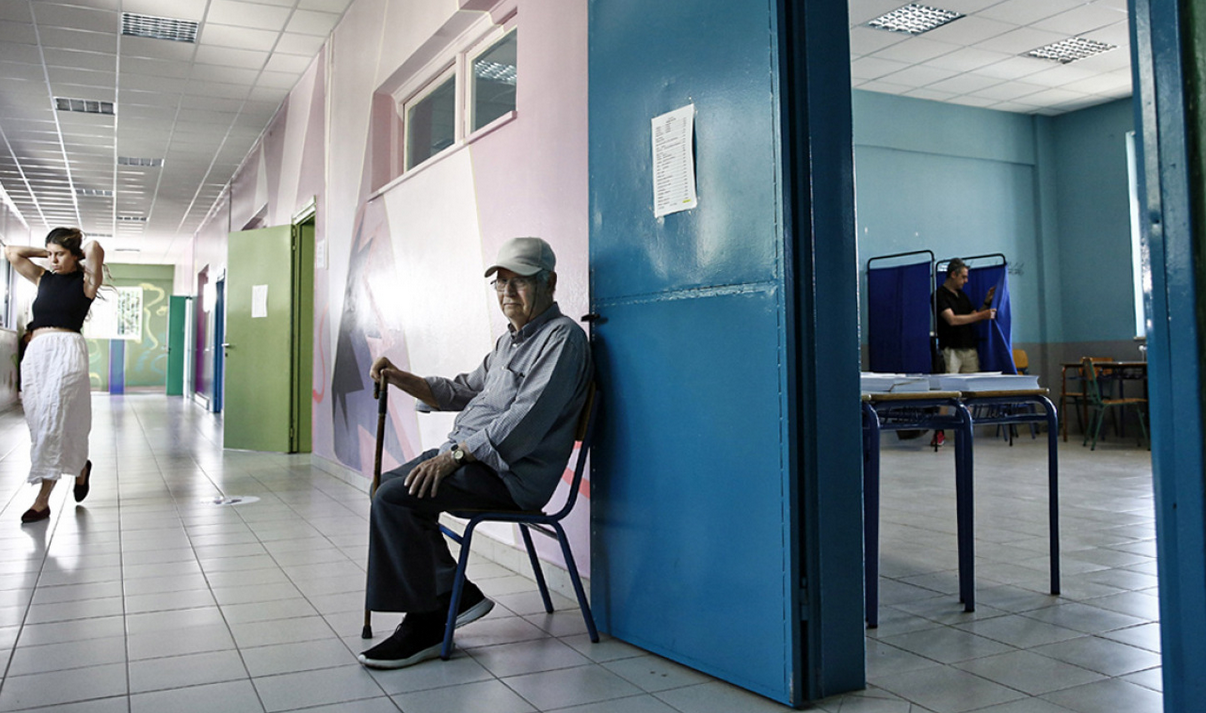Undoubtedly, the exit poll is a television product integrated into the election night. It is an initial prediction that allows for the development of discussion on the panels from the moment the polls close until a clear picture of the final election result emerges from the vote count. The difference between an exit poll and opinion polls lies in the fact that the exit poll refers to a larger sample of the current electorate rather than the general public, measures an accomplished act rather than intentions, and does not include undecided voters.
After all, for these reasons, it is considered a predictive tool by the scientific community and not a survey of trends. The essential utility of the exit poll, however, is that it is the only source of data that safely allows for the scientific analysis of the election results, the X-ray of the vote, and of voter abstention.
An important fact is that this time, the election outcome was determined not only by the citizens who went to vote but also, more significantly than ever, by those who chose not to go to the polls.
Although the European elections are a “contest” that does not determine the governance of the country, they contain messages for all political forces that will either be correctly decoded by their staffs or misinterpreted, leading them to more unfavorable developments. For each party, the election coin has two sides. Everyone can find some positives and some negatives in the outcome.
New Democracy (ND) won the elections with a double-digit percentage difference from the second party, SYRIZA, but failed to reach its target, losing a significant number of its voters. SYRIZA won the bet of securing second place, but with a low percentage that did not give it the much-desired governmental prospect. PASOK increased its percentages but did not make the leap, remaining third. However, for all parties, greater importance lies in the courage to recognize the negative side rather than resting on any positive reading.
Abstention
Out of a total of 9,605,244 voters, 3,891,466 went to the polls, resulting in an abstention rate of 59.5%. One in four of those who had voted in the parliamentary elections of June 2023 did not turn up at the polls.
The characteristics of abstention show a strong dependence on the age factor. In the age mix of voters last Sunday, younger age groups, particularly those aged 17-24, were once again underrepresented. Older age groups participated at a higher rate, further increasing the average age of the electorate. Abstention affected almost all parties, especially the larger ones, in a relatively proportional manner and for different reasons. Regarding ideological self-placement, participation was also relatively proportional, with a slight underrepresentation of center-right and centrist voters. Abstention does not show significant variations based on geographical dimension, urbanity, gender, and professional status, with any minor deviations attributable to the age factor.
From the level of abstention, it can be concluded that the dilemmas posed by the parties and their calls for participation did not have the expected response.
Consolidation and Shifts
Out of the 2,116,000 who voted for New Democracy (ND) in June 2023, about half voted for the party again. Slightly more than a quarter of its 2023 voters abstained, while slightly less than a quarter moved to other parties. The most interesting finding is that the defections to the left (15%) were greater than the defections to the right of ND (13%). In the relevant exit poll chart, the consolidation of ND is recorded at 70% because it refers to those who went to the polls in 2024, not the total number of ND voters in 2023.
The biggest losses for ND, either to abstention or to other parties, came from across the ideological-political spectrum, but were mainly recorded among centrist (-14%) and center-right voters (-14.7%), resulting in it losing its dominance in the centrist space to the benefit of PASOK. However, it maintains its overwhelming dominance as the choice of right-wing (73.2%) and center-right voters (68.6%). SYRIZA’s picture is similar: out of the 930,000 who voted for the party in June 2023, about half voted for it again, while its defections to other parties were almost equal to the abstention of its voters.
The consolidation of SYRIZA voters who went to the polls reached 62.5%, with defections in all directions. Its defections to left-wing parties amounted to 18.7%, and its defections to right-wing parties amounted to 15.3%.
The most significant new inflows recorded by the main opposition party (SYRIZA) include:
- 17% from those who had not voted in the previous parliamentary elections,
- 3.6% from ND voters,
- 5.2% from PASOK voters,
- 5.7% from KKE voters,
- 8.2% from MeRA25 voters,
- 2.7% from Spartans voters.
SYRIZA led among center-left voters with 37.4%, with PASOK being the second choice at 28%.
PASOK showed a slight variation:
- Out of its 617,000 voters from 2023, about 6 out of 10 voted for it again,
- About 2 out of 10 abstained,
- About 2 out of 10 moved to another party.
PASOK’s losses to the right and left were balanced. It secured a higher consolidation at the polls compared to ND and SYRIZA at 77.2%, and completed its total of 508,000 votes last Sunday with contributions from other parties, mainly from ND (4.9%) and SYRIZA (5.2%).
Maintaining its strength in the Center, PASOK emerged as the leading party among centrist voters due to the retreat of ND in this area.
The Hellenic Solution (Elliniki Lysi) was relatively less affected by abstention, securing a notable consolidation of its voters at 82.1%. This alone gave it almost one percentage point more than the percentage it had in the last parliamentary elections. The additional percentage was supplemented by inflows from other parties, mainly from Spartans, ND, SYRIZA, and PASOK. The vote for the Hellenic Solution does not only have a far-right orientation but also finds support in other ideological spaces.
Voting details for the Hellenic Solution include:
- 37.5% of voters identifying as far-right,
- 8.5% of right-wing voters,
- 8.2% of center-right voters,
- 9.8% of centrist voters, and smaller percentages from center-left and left-wing voters.
The vote also has strong geographical characteristics, with a higher frequency in Northern Greece.
See Also:
Reuters: Tomorrow the hearing of Fredi Belleris’ appeal – “The only fair decision would be my acquittal”
The KKE, with a similar percentage, had the second-highest consolidation at 78.9%, with the most significant leakage towards SYRIZA but also the largest inflows from it (5.7% respectively). KKE is the leading force among left-wing voters with a percentage of 37%, followed by SYRIZA at 33%.
The consolidation rate for Niki was 73.2%, for Course of Freedom (Plefsi Eleftherias) 53.7%, and for MeRA25 60%. Their percentages are mainly due to the positive balance of inflows and outflows they secured.
Additional details include:
- Niki had a consolidation rate of 73.2%.
- Course of Freedom (Plefsi Eleftherias) had a consolidation rate of 53.7%.
- MeRA25 had a consolidation rate of 60%.
The Voice of Reason (Foni Logikis) narrowly secured a seat from the inflows of voters mainly from ND but also from SYRIZA, PASOK, and Spartans, from citizens self-identified as right of the Center.
The demographic dimension
Regarding gender, significantly more men than women chose Hellenic Solution, Foni Logikis (Voice of Reason), and the Patriots. Conversely, more women chose SYRIZA and Plefsi Eleftherias (Course of Freedom).
In terms of age, SYRIZA emerged as the top party among young people aged 17-34 (18.2% compared to 15.9% for New Democracy), while its margin over New Democracy in older age groups secured a comfortable lead. Notably, SYRIZA’s percentages are equal in the two major age categories, under 50 years and over 50 years (15% and 14.9% respectively).
Ask me anything
Explore related questions





